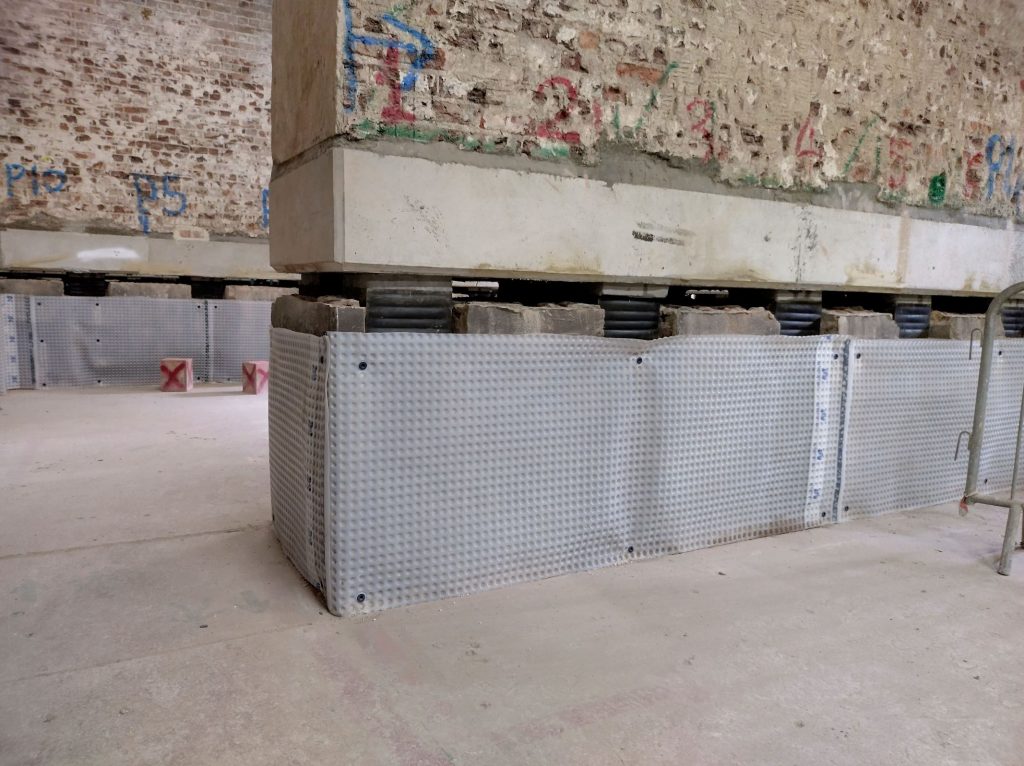
GUEST ARTICLE: Why vibration engineering is key for sustainability
The Intergovernmental Panel on Climate Change (IPCC) estimates that buildings and construction together account for approximately 39% of global energy-related carbon dioxide emissions when considering both operational and embodied emissions. One way of reducing the environmental impact of the built environment is adaptive re-use, which involves extending a building’s life and encouraging the re-use of embodied energy. Here, Adam Fox, director of vibration isolation specialist Mason UK, explains the potential role that vibration engineering can play in adaptive re-use…
The environmental benefits of adaptive reuse
“Adaptive reuse refers to the practice of repurposing existing buildings for new functions, rather than demolishing and constructing new structures. One of the key benefits of adaptive reuse is the preservation of embodied energy.
Globally, construction is responsible for 39% of carbon emissions, with 28% coming from operational costs and eleven per cent coming from embodied carbon during the construction phase. Although operational costs are higher, the savings accumulate over time.
For embodied carbon during the construction phase, in contrast, the carbon costs are all paid upfront. Reducing emissions right now is vitally important to tackling the climate crisis, so there needs to be extra emphasis on addressing the embodied carbon in buildings to deliver carbon reductions quickly.
By reusing existing structures, we conserve this embodied energy invested in their original construction. Constructing a new building requires a substantial amount of energy and resources, including raw materials, transportation, and manufacturing processes. Over 60 per cent of embodied carbon in a building is contained in the sub-structure, frame, upper floors and roof of a building.

As most of these elements can be reused or repurposed in a refurbished building, adaptive reuse drastically reduces the upfront carbon cost in comparison with demolishing the structure and building a new one in its place. Furthermore, demolishing existing buildings generates immense amounts of waste materials and the disposal of construction debris contributes to pollution.
As well as the sustainability benefits, by repurposing existing structures, architects, developers and engineers can contribute to the revitalisation or urban areas, reducing urban sprawl and the need for new infrastructure development. However, this last point in particular often creates a need for effective vibration control.
Enter vibration control
Buildings situated in built up urban areas, London in particular, are often located in proximity to major sources of noise and vibration, such as train and tube lines. This is especially problematic for historic buildings, which were designed in a different era where modern acoustic engineering was neither available nor necessary.
It might seem that the need for effective vibration control rules out the possibility of adaptive reuse in some scenarios. Imagine, for example, an historic building in proximity to a major tube or train line. The developers might envisage repurposing the existing building into a luxury hotel, but with vibration from the train being transmitted into the buildings structure, the occupants will inevitably face an intolerable level of noise.
Although structural isolation is more common, and certainly easier, for new buildings, it is also possible for existing buildings, including historic ones.
Adaptive reuse is a key strategy for helping reduce the environmental impact of the built environment. In urban areas, effective structural isolation of existing buildings will be key to making it viable in many instances.”
Latest news

26th July 2024
Enfield Speciality Doors completes world-class project for Atlas Copco HQ
A rundown office and warehouse building completely transformed into a modern headquarters for Atlas Copco has been fitted with more than 120 internal fire doors from Enfield Speciality Doors.
Posted in Access Control & Door Entry Systems, Articles, Building Industry News, Building Products & Structures, Building Systems, Case Studies, Doors, Interior Design & Construction, Interiors, Posts, Restoration & Refurbishment, Retrofit & Renovation, Security and Fire Protection, Sustainability & Energy Efficiency, Timber Buildings and Timber Products, Wooden products
26th July 2024
Abloy UK launches new white paper
Abloy UK, a leading provider of security and access control solutions, has launched a new white paper.
Posted in Access Control & Door Entry Systems, Architectural Ironmongery, Articles, Building Industry News, Building Products & Structures, Building Services, Doors, Facility Management & Building Services, Health & Safety, Information Technology, Innovations & New Products, Publications, Research & Materials Testing, Security and Fire Protection
26th July 2024
MCRMA Member Profile: David Roy, Director of Roofconsult
David Roy of MCRMA member company Roofconsult has more than 50 years’ experience to draw upon working in the building envelope sector and a unique perspective on how it has changed in that time.
Posted in Articles, BIM, Infrastructure & CAD Software, Building Associations & Institutes, Building Industry News, Building Products & Structures, Building Services, Building Systems, Cladding, Information Technology, Restoration & Refurbishment, Retrofit & Renovation, Roofs, Walls
26th July 2024
Strand: Enhancing Door Functionality and Safety
Craig Fox, Sales Director for Strand Hardware, outlines how door industry professionals might apply door limiting stays…
Posted in Architectural Ironmongery, Articles, Building Industry News, Building Products & Structures, Building Services, Doors, Facility Management & Building Services, Health & Safety, Restoration & Refurbishment, Retrofit & Renovation
 Sign up:
Sign up: